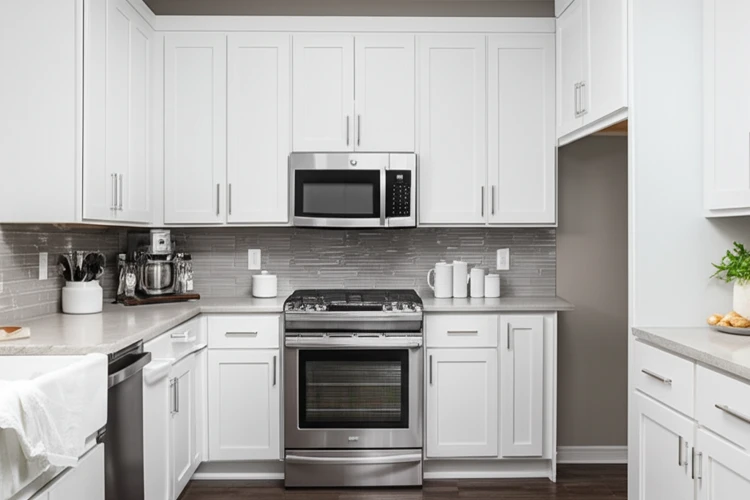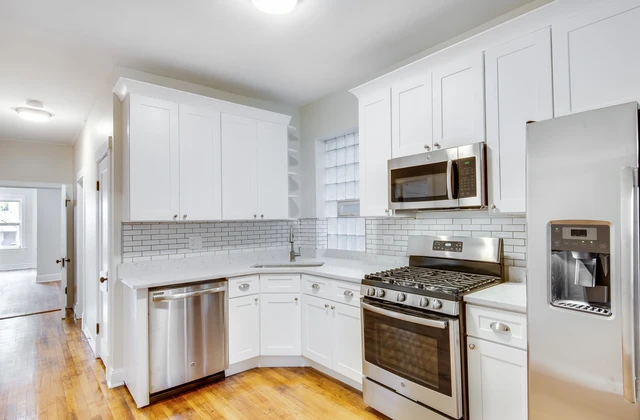Disclaimer: As an Amazon Associate, I earn commission from qualifying purchases.
The average height of kitchen counters is a crucial aspect of kitchen design that can significantly impact functionality and ergonomics. Whether you’re a homeowner, renter, or kitchen enthusiast, understanding the importance of counter height can enhance your kitchen experience. This guide will delve into the significance of counter height, standard measurements, customization options, ergonomic considerations, material choices, installation steps, and much more.
The Importance of Counter Height in Kitchen Design
The height of kitchen counters plays a pivotal role in determining the efficiency and comfort of your workspace. Proper counter height affects your posture, ease of use, and overall kitchen aesthetics. According to ergonomic principles, a well-designed kitchen counter can reduce strain and fatigue, making your culinary activities more enjoyable and productive.
For instance, the National Kitchen & Bath Association (NKBA) recommends a standard counter height of 36 inches, which is based on average adult heights and typical kitchen tasks. However, this standard may not be suitable for everyone. Consulting with a professional designer can provide personalized advice tailored to your specific needs.
Standard Heights for Kitchen Counters
The standard height for kitchen counters is generally 36 inches from the floor to the countertop. This measurement is derived from industry standards and guidelines set by organizations like the NKBA. The rationale behind this standard is to accommodate the average adult height, ensuring that most people can comfortably use the countertop for various tasks.
Building codes and industry standards also support this measurement, making it a widely accepted norm in kitchen design. The transparency in these standards helps ensure consistency and reliability in kitchen construction.
Customizing Counter Heights for Specific Needs
While the standard height of 36 inches is suitable for many, it may not be ideal for everyone. Customizing counter heights to meet specific needs can greatly enhance the usability of your kitchen. For example, taller individuals may benefit from higher counters, while wheelchair users require lower counter heights for better accessibility.
Case studies of customized kitchen designs show that adjusting counter heights can significantly improve user satisfaction and efficiency. For instance, a counter height of 38-40 inches may be more comfortable for taller individuals, while a height of 30-32 inches is recommended for wheelchair users. It’s essential to consider the pros and cons of customization, as it may involve additional costs and planning.
Ergonomic Considerations for Counter Heights
Ergonomics plays a crucial role in determining the ideal counter height. Different heights can affect posture, reach, and ease of use. For example, a counter that is too high can cause shoulder and neck strain, while one that is too low can lead to back pain.
Ergonomic studies recommend that the counter height should be at or slightly below elbow height for comfortable use. Comparing standard heights to ergonomic recommendations can help you make informed decisions. Academic studies and industry publications on ergonomics provide valuable insights into the benefits and limitations of different counter heights.
Choosing the Right Materials for Countertops
The material of your kitchen countertop can influence both its height and durability. Popular materials include granite, quartz, and wood, each with its unique properties.
Granite is known for its durability and resistance to heat and scratches. Quartz offers similar benefits with added stain resistance. Wood countertops provide a warm, natural aesthetic but require more maintenance. Reputable home improvement websites and material guides can help you choose the right material based on your needs and budget. Pricing information and comparisons can also guide your decision-making process.
Installing Kitchen Counters: Step-by-Step Guide
Installing kitchen counters requires careful planning and execution. Here is a step-by-step guide to help you through the process:
Tools Needed:
– Tape measure
– Level
– Screwdriver
– Drill
– Safety glasses
– Gloves
Safety Precautions:
– Wear appropriate safety gear.
– Ensure the work area is well-ventilated.
– Follow manufacturer instructions for adhesives and sealants.
Step-by-Step Instructions:
1. Measure and mark the countertop placement.
2. Ensure the base cabinets are level and secure.
3. Apply adhesive to the base cabinets.
4. Place the countertop and align it with the marks.
5. Secure the countertop with screws or clamps as needed.
6. Allow the adhesive to cure according to the manufacturer’s instructions.
Adjusting Counter Heights for Different Kitchen Layouts
Different kitchen layouts may require adjustments to counter heights for optimal functionality. For example, U-shaped kitchens benefit from uniform counter heights to maximize workspace, while L-shaped kitchens may need varied heights to accommodate different tasks.
Visual examples and case studies from professional designers can provide insights into the best practices for different layouts. It’s important to consider the pros and cons of each layout and how counter height adjustments can enhance or hinder functionality.
Optimizing Kitchen Counters for Accessibility
Making kitchen counters accessible for people with disabilities involves height adjustments and other modifications. The Americans with Disabilities Act (ADA) provides guidelines for accessible design, including recommended counter heights of 30-32 inches for wheelchair users.
Accessible design standards and industry publications offer detailed recommendations for creating an inclusive kitchen environment. Transparent information on accessibility benefits can help you make informed decisions that cater to diverse user needs.
Maintenance and Care for Kitchen Counters
Proper maintenance and care are essential for ensuring the longevity and optimal performance of your kitchen counters. Here are some tips:
Cleaning:
– Use mild detergents and warm water for daily cleaning.
– Avoid abrasive cleaners that can scratch the surface.
– Wipe spills immediately to prevent stains.
Repair:
– Address minor chips or cracks promptly to prevent further damage.
– Consult manufacturer guidelines for specific repair techniques.
Common Mistakes to Avoid When Setting Counter Heights
Setting the correct counter height is crucial, and there are common mistakes to avoid:
Ignoring Ergonomics: Failing to consider ergonomic principles can lead to discomfort and strain.
Not Considering User Needs: Overlooking the specific needs of users, such as height and mobility, can result in an inefficient kitchen layout.
Inadequate Planning: Rushing the installation process without proper measurement and planning can lead to costly errors.
Professional designers and industry experts often highlight these mistakes and provide solutions to avoid them.
Innovative Solutions for Kitchen Counter Heights
Innovative solutions for adjusting kitchen counter heights include lift mechanisms and adjustable countertops. These solutions can cater to diverse user needs and enhance kitchen functionality.
Specific innovative products and designs, such as motorized lift systems, can provide flexibility and convenience. Industry publications and design blogs often feature these innovative solutions, providing transparent pricing information and practical insights.
Frequently Asked Questions (FAQs)
What is the standard height for kitchen counters?
The standard height for kitchen counters is 36 inches from the floor to the countertop. This measurement is based on industry standards and guidelines set by organizations like the NKBA.
How can I adjust counter heights for wheelchair accessibility?
For wheelchair accessibility, the recommended counter height is 30-32 inches. This adjustment ensures that wheelchair users can comfortably reach and use the countertop. Consulting accessible design standards and industry publications can provide detailed guidelines.
What materials are best for kitchen countertops?
The best materials for kitchen countertops depend on your specific needs and budget. Granite is known for its durability and resistance to heat and scratches. Quartz offers similar benefits with added stain resistance. Wood countertops provide a warm, natural aesthetic but require more maintenance. Reputable home improvement websites and material guides can help you make an informed decision.
How do I install kitchen counters safely?
Installing kitchen counters safely involves careful planning and execution. Ensure you have the right tools, follow safety precautions, and adhere to the step-by-step installation guide provided. Wearing appropriate safety gear and following manufacturer instructions for adhesives and sealants are crucial.
What are some common mistakes to avoid when setting counter heights?
Common mistakes to avoid when setting counter heights include ignoring ergonomics, not considering user needs, and inadequate planning. Failing to consider ergonomic principles can lead to discomfort and strain, while overlooking specific user needs can result in an inefficient kitchen layout. Rushing the installation process without proper measurement and planning can lead to costly errors.
Can I adjust my kitchen counter height after installation?
Adjusting kitchen counter height after installation is possible but can be complex and costly. It often involves dismantling the existing countertop and base cabinets, which may require professional assistance. Innovative solutions like lift mechanisms and adjustable countertops can provide flexibility and convenience for future adjustments.
Conclusion
The average height of kitchen counters plays a critical role in kitchen functionality and ergonomics. Understanding the importance of counter height, standard measurements, customization options, and ergonomic considerations can help you create a kitchen that is both efficient and comfortable. Whether you’re a homeowner, renter, or kitchen enthusiast, considering your specific needs and consulting with professionals can ensure a personalized and optimal kitchen design.







